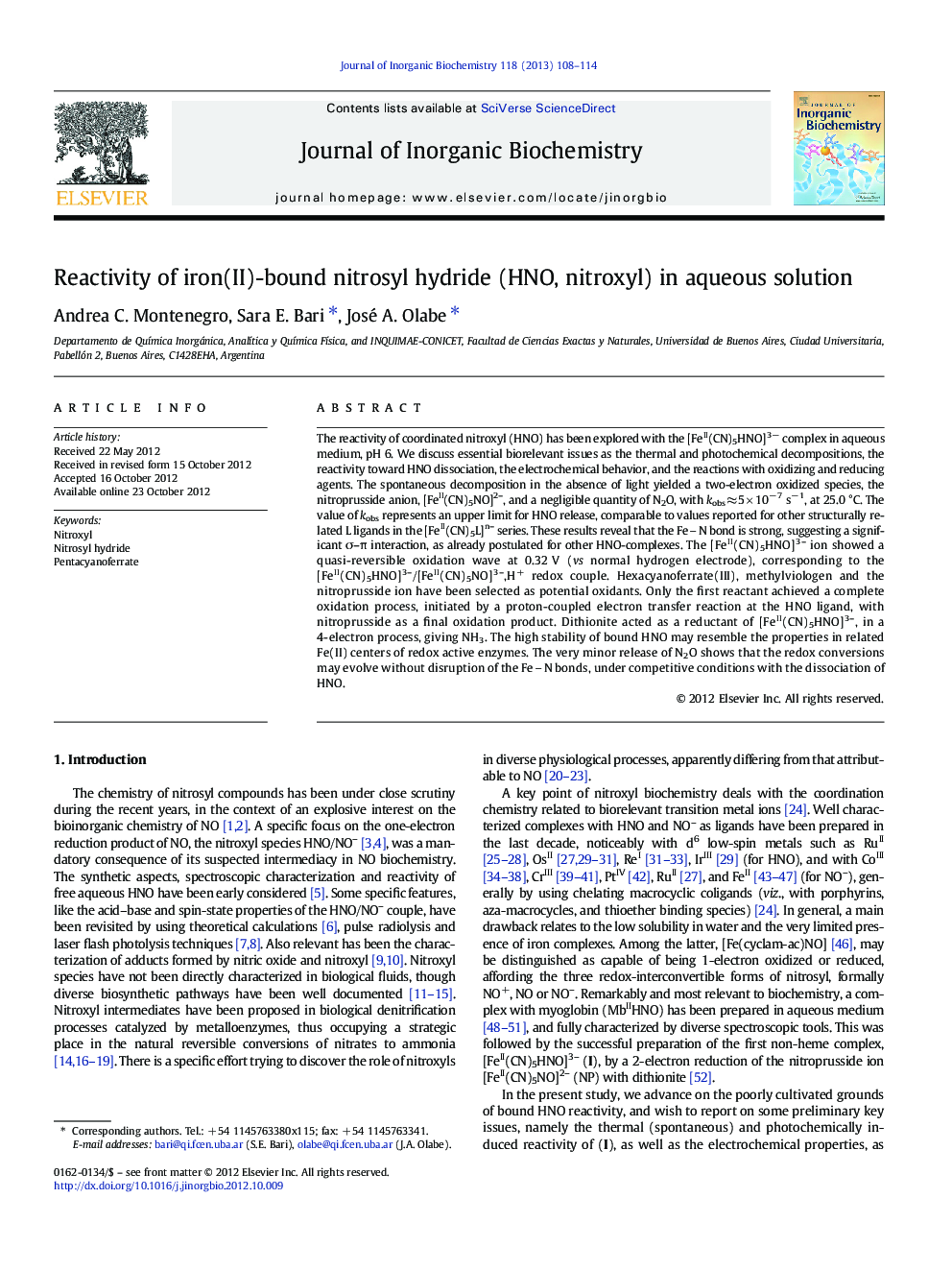| Article ID | Journal | Published Year | Pages | File Type |
|---|---|---|---|---|
| 1315911 | Journal of Inorganic Biochemistry | 2013 | 7 Pages |
The reactivity of coordinated nitroxyl (HNO) has been explored with the [FeII(CN)5HNO]3 − complex in aqueous medium, pH 6. We discuss essential biorelevant issues as the thermal and photochemical decompositions, the reactivity toward HNO dissociation, the electrochemical behavior, and the reactions with oxidizing and reducing agents. The spontaneous decomposition in the absence of light yielded a two-electron oxidized species, the nitroprusside anion, [FeII(CN)5NO]2–, and a negligible quantity of N2O, with kobs ≈ 5 × 10− 7 s− 1, at 25.0 °C. The value of kobs represents an upper limit for HNO release, comparable to values reported for other structurally related L ligands in the [FeII(CN)5L]n– series. These results reveal that the FeN bond is strong, suggesting a significant σ–π interaction, as already postulated for other HNO-complexes. The [FeII(CN)5HNO]3– ion showed a quasi-reversible oxidation wave at 0.32 V (vs normal hydrogen electrode), corresponding to the [FeII(CN)5HNO]3–/[FeII(CN)5NO]3–,H+ redox couple. Hexacyanoferrate(III), methylviologen and the nitroprusside ion have been selected as potential oxidants. Only the first reactant achieved a complete oxidation process, initiated by a proton-coupled electron transfer reaction at the HNO ligand, with nitroprusside as a final oxidation product. Dithionite acted as a reductant of [FeII(CN)5HNO]3–, in a 4-electron process, giving NH3. The high stability of bound HNO may resemble the properties in related Fe(II) centers of redox active enzymes. The very minor release of N2O shows that the redox conversions may evolve without disruption of the FeN bonds, under competitive conditions with the dissociation of HNO.
Graphical abstractEssential issues on the reactivity of coordinated nitroxyl (HNO) have been explored with the [FeII(CN)5HNO]3– complex in aqueous medium, pH 6. The complex is highly stable toward HNO-dissociation, and acts as a mild reductant, reacting with hexacyanoferrate(III) to give nitroprusside. The complex also reacts with reductants (dithionite), leading to ammonia.Figure optionsDownload full-size imageDownload as PowerPoint slideHighlights► The reactivity of [FeII(CN)5HNO]3–, (I), was explored in aqueous solution, pH 6. ► The first order decay of (I) (k ≈ 10− 7 s− 1, 25 °C) involves a 2-electron oxidation of HNO giving bound-NO+, with negligible quantities of N2O. ► Complex (I) shows a quasi-reversible wave at 0.32 V (1-electron oxidation to [FeII(CN)5NO3–], H+). ► Oxidants with E° ≥ 0.4 V (viz., [Fe(CN)6]3–) convert HNO into bound-NO+. ► Ammonia is detected in the 4-electron reduction of (I) with dithionite.
